John T. Andrews
SAT. SPECIAL EVENT, 17 April 2021
A hybrid in-person/online celebration of John's scientific legacy
Join us for a slide show, multiple speakers, pre-recorded stories, and open mic stories. The event goes from 11:00am to 1:00pm on Saturday.
If you want to only attend the celebration (online or in person) and not the Workshop, email us.
If you know John personally, consider contributing a few photos (with captions), a written story, a pre-recorded video story, or a live story. Email ideas and content to us.
Pioneer
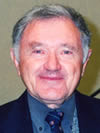
The 50th International Arctic Workshop celebrates the scientific legacy of its still highly active founder
John T. Andrews.
John has been a pioneer in advancing our understanding of Pleistocene ice sheets, their interaction with adjacent oceans, and their profound influence on the Earth system.
Mentor
Perhaps John’s most enduring legacy has been the more than 75 graduate students he supervised, most of whom now populate academia, government, or industry. He was an early advocate of a gender-neutral graduate program and has mentored a number of exceptional female graduate students. His graduate supervision and generous sharing of ideas has inspired the careers of many in the geoscience field today, and created a community of educators and researchers who carry on his legacy.
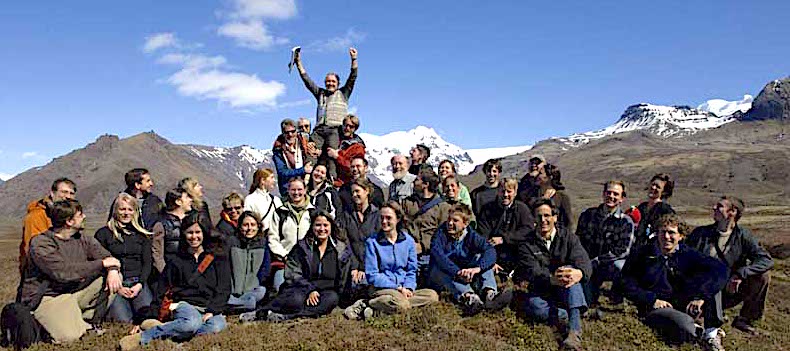
John at the top of a pile of former students and their students in turn. 2007 Arctic Workshop, Iceland. Photo: Tad Pfeffer.
Arctic Workshop
2021 Workshop
The 50th Arctic Workshop will recognize John's many contributions at special Saturday event as well as with talks by some of his former students. John is still an active researcher, he may give a synopsis of his current research during the Workshop.
Workshop history
The workshop grew out of a series of informal annual meetings started in 1970 by John. The purpose of the early meetings was to give graduate students an opportunity to present their ongoing research, gain experience in public speaking, and obtain feedback from more senior researchers. Subsequent meetings retained this emphasis while simultaneously expanding the contributions of professional researchers.
See more Workshop history, including a list of 50 Workshop locations.
Key awards
- GSA Penrose Medal, Geological Society of America
- AAAS Fellow, American Association for the Advancement of Science
- AGU Fellow, American Geophysical Union
- AMQUA Distinguished Career Award, American Quaternary Association
- GSA Kirk Bryan Award, Geological Society of America
Publications
John's more than 300 publications
span the fields of glacial geology, stratigraphy, paleomagnetism, geodynamics, geochronology, paleoceanography, and paleoclimatology. Many of his publications have challenged existing paradigms and provided fundamental insights into some of Quaternary geology’s biggest questions.
Students
1960s
M.Sc.: John England (1969)
1970s
PostDoc: Gifford Miller, Susan Short
Ph.D.: David Pheasant (1971), John England (1974), Colin Thorn (1974), Richard Cowan (1975), Dana Isherwood (1975), Gifford Miller (1975), Arthur Dyke (1977), Alan Nelson (1978), Jim Johnson (1979)
M.Sc.:
Darv Lloyd (1970),
Steve Boyer (1972),
Paul Carrara (1972),
Art Mears (1972),
Robert Retherford (1972),
Larry Williams (1972),
Arthur Dyke (1974),
Mary-Anne "Molly" Mahaffy (1974),
Charlene Wright (married name: Locke)(1975),
Larry Anderson (1976),
Steve Haefner (1976),
William Locke (1976)
1980s
PostDoc: Lisa Osterman, Kerstin Williams
Ph.D.: Phillip Thompson "Thom" Davis (1980), William Locke (1980), William Mode (1980), Eric Leonard (1981), Lisa Osterman (1982), Peter Clark (1984), Jay Stravers (1986), Áslaug Geirsdóttir (1988), Charles "Chip" Laymon (1988), Kerstin Williams (1988), Anne Jennings (1989), Peter Lea (1989), Harvey Thorleifson (1989)
M.Sc.: Julie Brigham-Grette (1980), Fred Hawkins (1980), Dave Muller (1980), Marilyn Grout (1981), Laureen Stravers (1981), Julian Dowdeswell (1982), Evelyn Lind (1983), Stephanie Baker (1984), Merith Reheis (1984), Kerstin Williams (1984), Mandy Wilson (1984), Anne Jennings (1986), Jim Walters (1988), Phil Wyatt (1989)
1990s
PostDoc: Anne Jennings, Valerie Sloan
Ph.D.: Christopher Waythomas (1990), Raoul Miller (1992), Mary Gillam (1998), Valerie Sloan (1998), Jórunn Harðardóttir (1999), Kathy Licht (1999)
M.Sc.: Lesley Evans (1990), Mark Abbott (1991), John Dwyer (1993), Kathy Tedesco (1993), Michael Kerwin (1994), Tom Cooper (1995), Kathy Licht (1995), Patti Best (1996), Matthew Kirby (1996), Andrew Stein (1996), Wendy Cunningham (1997), L. Micaela "Miki" Smith (1997)
2000s
PostDoc: Jórunn Harðardóttir
Ph.D.: Donald Barber (2001), Lisa Doner (2001), L. Micaela "Miki" Smith (2001), Sarah Principato (2003), Gréta Björk Kristjánsdóttir (2005)
M.Sc.: Stephanie Cartee-Schoolfield (2000), Wendy Freeman (2000), Ursula Quillman (2006)
Graduation year unclear
M.Sc.: Sarah Klaber, Barb McCoy
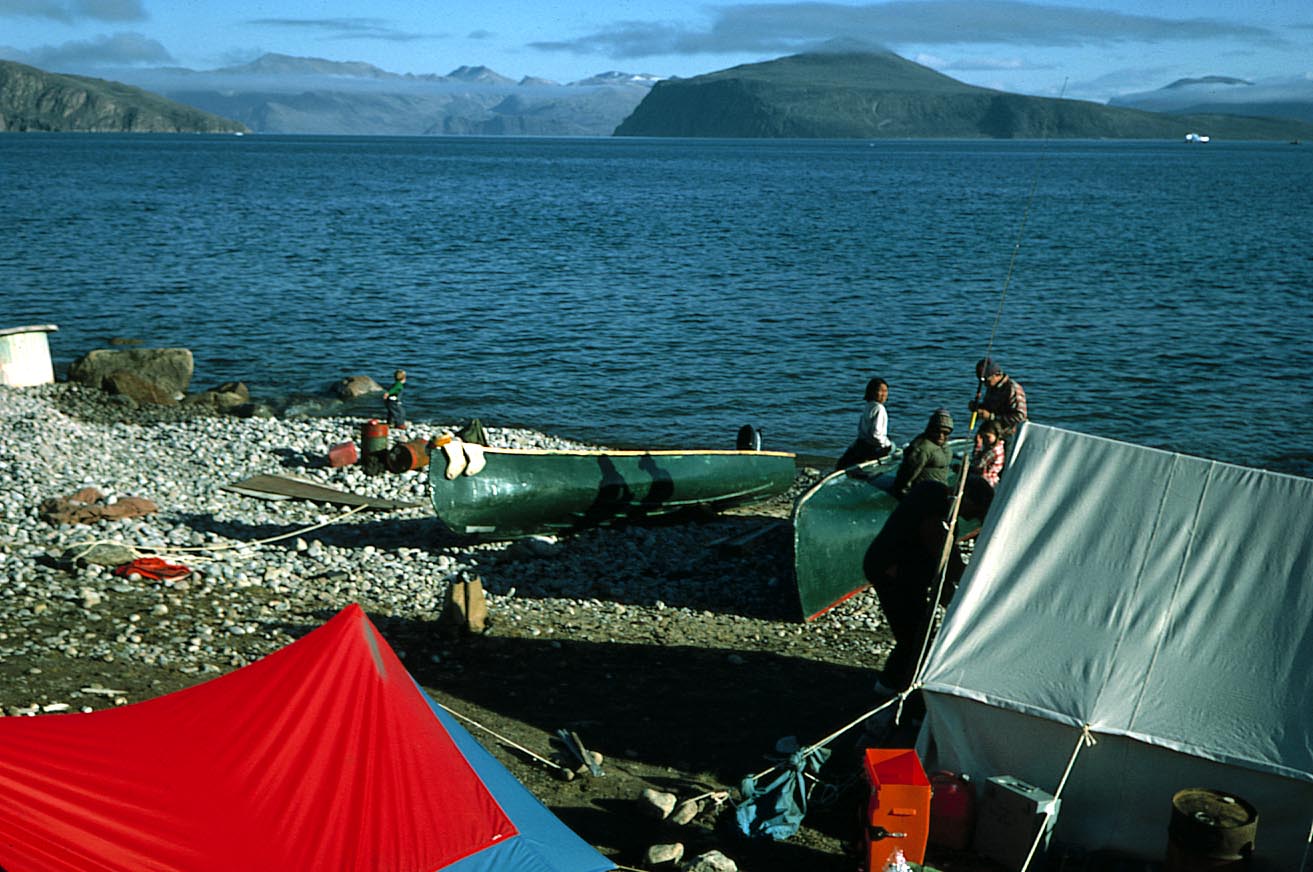
Fieldwork at Qivitu, Baffin Island, 1975. Photo: John Andrews.
Early career
John began his career at the University of Nottingham after making the crucial decision to change his undergraduate focus (and likely career path) from rugby to geosciences. He then moved to McGill University for his Master’s degree, where he was first introduced to the Canadian Arctic. After completing his M.Sc. thesis in 1961, he was hired by the Department of Energy, Mines, and Resources in Ottawa, and started fieldwork on Baffin Island. He was able to use his research for the Canadian government as the basis for a Ph.D. at the University of Nottingham, which he completed in 1965. In 1968, he accepted a position at the University of Colorado, where he initiated the successful and influential Baffin Island research program that has been running continuously since.
Changing the paradigm
Up until the start of John’s research in the Canadian Arctic, our understanding of the North American Laurentide Ice Sheet was largely based on decades of work in the Great Lakes region that, while only reflecting a small sector of the ice sheet, was generally accepted as being representative of the ice-sheet history as a whole.
John’s subsequent work in the central and eastern Canadian Arctic conclusively demonstrated otherwise, with his detailed and meticulous field work (often conducted under arduous and dangerous conditions), revolutionizing our understanding of the Laurentide Ice Sheet.
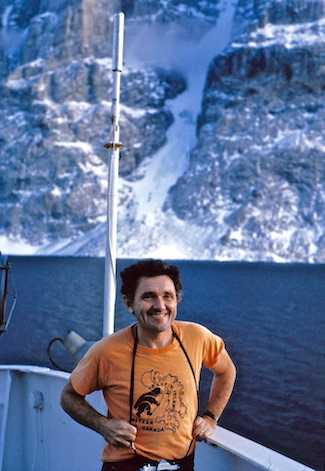
John participating in the INSTAAR-BIO Sedimentology of Fjords Experiment, McBeth Fiord, Baffin Island, Sept. 1983. Photo: Jaia Syvitski.
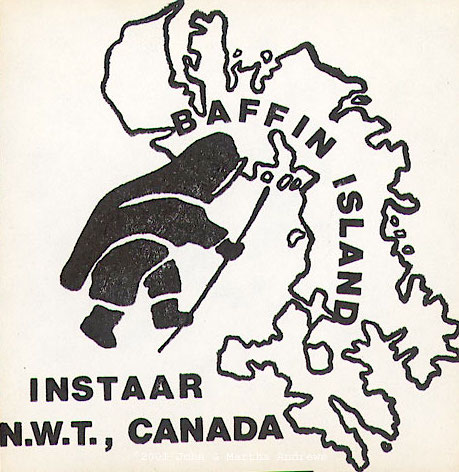
Logo of the Baffin Island study team at INSTAAR in the 1970s and 1980's.
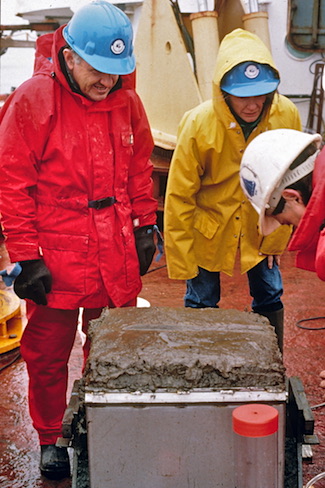
John working on the C.S.S. Hudson, East Greenland, 1993. Photo: Jaia Syvitski.
Research highlights
Relative sea level and ice thickness
John's benchmark work in the 1960s and 1970s on developing records of relative sea level change clearly revealed the isostatic response to loading by the Laurentide Ice Sheet. At the same time, John developed the first history of changes in the area and thickness of the ice sheet during the last deglaciation. This work formed the geological underpinning for research done in collaboration with Richard Peltier to derive the rheology of the solid Earth as well as to develop a forward model to predict relative sea level histories around the globe. Such models have now become central in evaluating our understanding of Earth’s rheology as well as in understanding past, present, and future regional sea-level variability.
Deglaciation and energy budget
His 1973 analysis of the energy budget required to deglaciate the Laurentide Ice Sheet demonstrated that there was a substantial energy deficit from insolation forcing alone, identifying, for the first time, the importance of ice-sheet instabilities and feedbacks in causing the rapid deglaciation. This was the first demonstration of the 100-kyr problem that continues to challenge the paleoclimate community, and has implications that continue to resonate today over our understanding about the future of Earth’s present ice sheets.
Ice sheet modeling
His work with graduate student Molly Mahaffy in the 1970s led to the first three-dimensional numerical ice-sheet model, the basic components of which remain the standard for many ice-sheet models today. At the same time, John and colleagues addressed the question of the last glacial inception, including using the ice-sheet model to first demonstrate that Milankovitch forcing alone was insufficient to initiate ice-sheet growth at the rate inferred from the geological record, implying the need for additional feedbacks on that forcing.
Geochronology
His work with colleagues in the 1980s in applying novel geochronological methods to date deposits beyond the range of radiocarbon and in using sediment tracers to document ice-sheet scale flow patterns pointed to a highly dynamic ice sheet where centers of mass may have rapidly migrated as the interior of the ice sheet collapsed several times during the last glaciation. The fact that such ice-sheet behavior may exist shook the very foundations of then current understanding, and provided geological documentation of a potential behavior that is now of widespread scientific and public concern.
Marine record
His pioneering work in examining the marine record from the North Atlantic Ocean led to new understanding of ice sheet-ocean interactions that contribute to the abrupt climate changes on millennial timescales. John recognized early on that continuous archives of ice sheet-ocean interactions would be preserved in sediment records on glaciated marine shelves, an archive largely ignored by paleoceanographers up to that point, and thus resolve some of the problems encountered in trying to reconstruct the glacial history of the Laurentide Ice Sheet from land-based evidence. This effort in the late 1980s and early 1990s led to the recognition that Heinrich events reflect partial collapses of the Laurentide Ice Sheet, a startling discovery that remains a primary focus of research in the paleoclimate and paleoceanographic community.
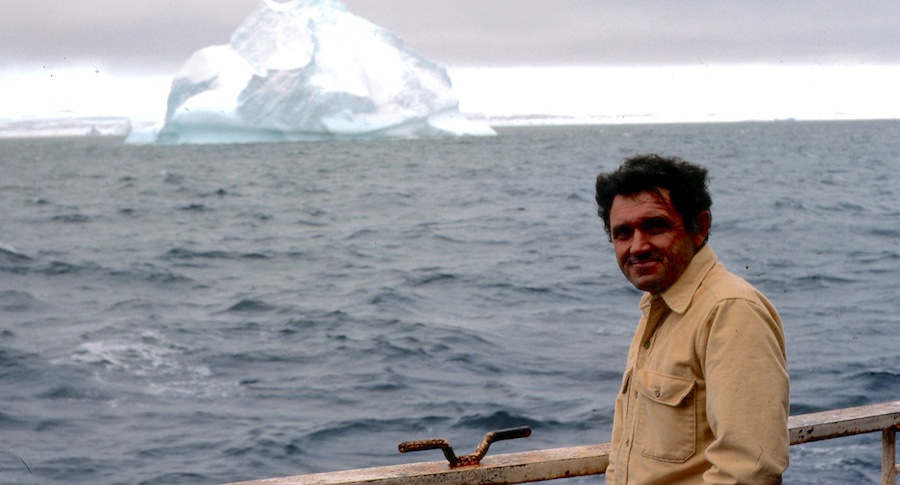
John on the C.S.S. Hudson near Baffin Island, 1983.
John's impact
Importance of ice sheets
Why is John's work of such significance? Ice sheets, past and present, represent a key component of the global climate system, and variations in their size have been the dominant control on global sea level for much of Earth history. Understanding how ice sheets (present and past) respond to and amplify climate change thus represents one of the grand challenges in the geological sciences.
Revolutionary research
John’s wide-ranging research on the Laurentide Ice Sheet has continually defined the field on this important topic, and much of what we know about the history and dynamics of the ice sheet can be traced back to his contributions.
Acknowledgments
Much of the content in this page is based on John's 2016 Penrose Medal (Geological Society of America)
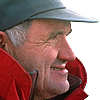
Photo at left and in website banner: John Andrews on board the C.S.S. Hudson, Kangerlugsuaq Fjord, East Greenland, Oct. 1993. Photographer: Jaia Syvitski.
John's thank you
John thanks Baffin Island, Arctic Canada, and its indigenous peoples for providing a rich treasure trove of Quaternary puzzles that have provided him, his colleagues, and graduate students many years of enjoyment, but also for the magnificence of its landscapes and the tranquility it brought.
Long-term supporter:
The US National Science Foundation
Office of Polar Programs
Sponsored and
hosted by
INSTAAR